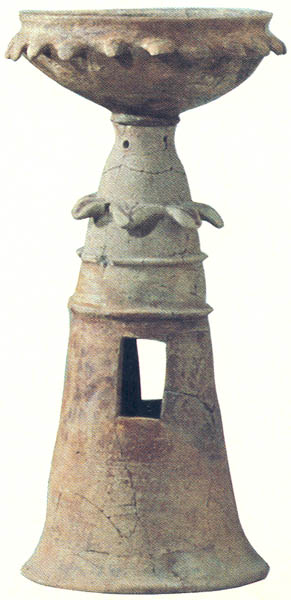Image Details

The Oriental Institute Museum, University of Chicago
Cylindrical pottery stands come in one- and two-piece forms. Most numerous are two-piece stands such as this 12th-century B.C. example from Megiddo (shown here, compare with two previous photos). Two windows penetrate opposite sides of the bell-shaped base. Above the windows, two low ridges and a collar of projecting petals, perhaps representing lotus leaves, encircle the base. Similar petals decorate the bowl on top, which has on its underside a knob that fits into the hollow stand. A pin, passing through holes pierced in the stand and the knob, fastens the bowl and stand together. Marks of fire in the bowl’s basin indicate that this stand was used for burnt offerings.
